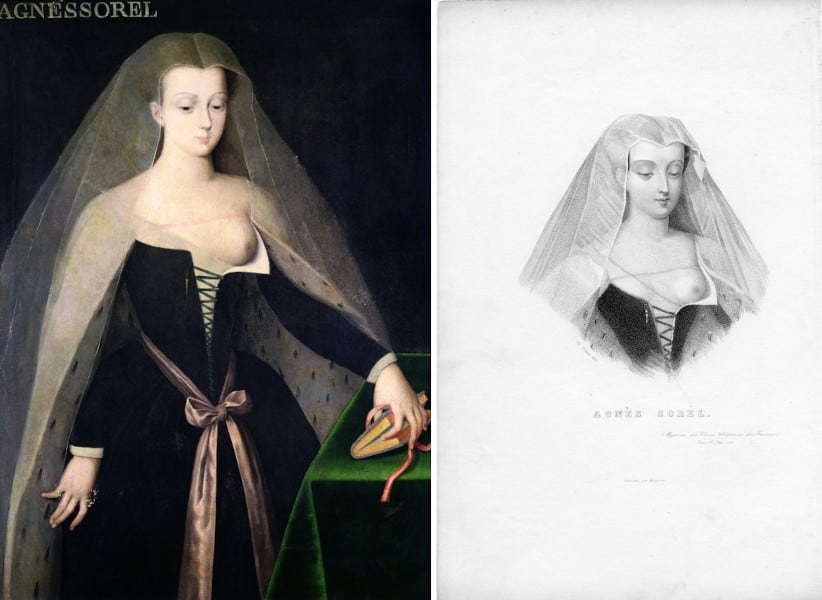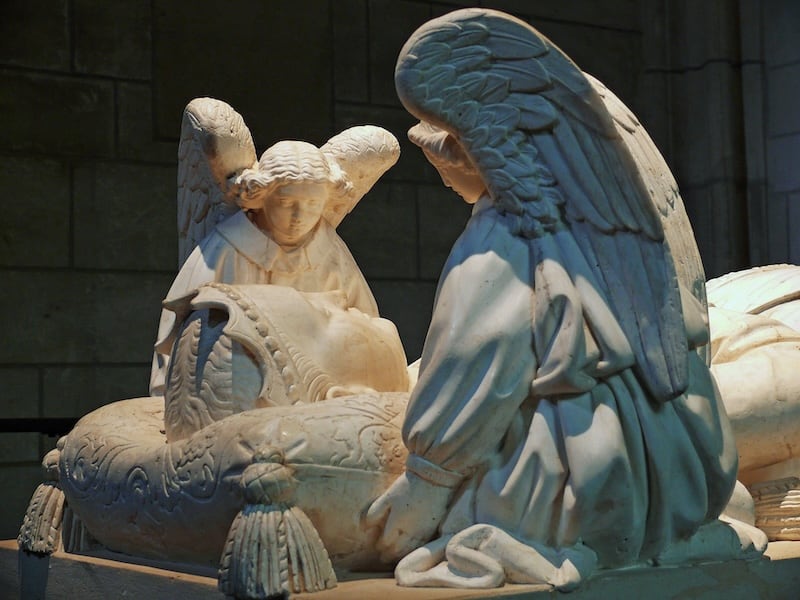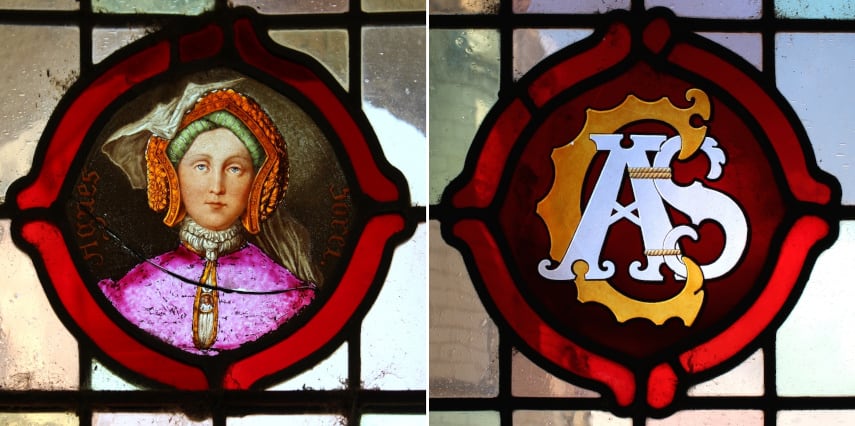The Allure of Agnès Sorel - A Royal Mistress and an Art Muse
Although famed for her beauty, the highly illustrious Agnès Sorel (1422 – 1450) entered history as an inspiring muse, a highly influential figure of the French royal court, and the first woman to formally solidify the position of the royal mistress. Harnessing the grip she had on the king, Sorel exercised her power, achieving a strong impact in shaping the political and social landscape.
Allegedly, the passionate relationship with Agnès stirred the ruler from a prolonged depression, allowing her a position of great influence in the matters of court and state. According to some sources, Sorel's influence first came to light when she managed to convince King Charles VII to mobilize the troops and oust English intruders from French territories. Although later debunked, the story propelled the myth of Agnès Sorel, or Dame de beauté, as the Lady of Beauty who captured the king’s heart and elevated her status as the first officially recognized royal mistress.

The Infatuated Monarch
Agnès Sorel was born in 1422 to parents Jean Soreau and Catherine de Maignelais in Fromenteau (Yzeures sur Creuse), Touraine, France. King Charles VII of France first laid eyes on the young beauty when Sorel was around 20 years old during her appointment as a maid of honor to Isabella, Duchess of Lorraine, and consort to Rene I of Naples. Soon after the life-changing encounter, Agnès switched households, serving as the lady-in-waiting for Marie d'Anjou, the Queen of France and Isabella's sister-in-law.
Entranced by the young girl's allure, King Charles VII quickly became enamored with Sorel, who became his lover and was rumored to be his favorite. The utterly infatuated monarch decided to grant her a private residence, selecting the famous Château de Loches, the fabled starting point of the March to Reims, where Joan of Arc persuaded Charles to be crowned King of France. The sovereign and Agnès had four children together, all of whom were formally recognized by the king. However, Sorel and their fourth daughter died at the age of 28 on February 9th, 1450, during a journey from Chinon to Jumièges, attempting to visit and meet with Charles VII on a military campaign.

The Royal Mistress
Alongside extravagant gifts such as castles, land, and wealth, the king also acknowledges her position as a royal mistress, adorning Agnès with a status that was a thorn in the eye of the French court in Chinon, including the heir Louis. Sorel didn't seem to bother extinguishing the arising jealousy but instead reveled in scandal, propelling the intrigue with flamboyant tastes and dressing deemed scandalous at the time. Agnès wore extremely low-cut gowns, introducing a highly revealing fashion that was both mimicked and criticized. The trend in question was particularly critiqued by Jean Juvénal des Ursins, the archbishop of Reims, who marked it outrageous and urged the king to rectify the style of "front openings through which one sees the teats, nipples, and breasts of women."
Sorel's death also provided ground for scandal as it was assumed Sorel was poisoned, sparking gossip and slander in the court. Among the accused was the dauphin, the future King Louis XI, as well as the royal adviser Jacques Coeur, who was ultimately charged with the crime in a plot to remove him from power. Several theories have speculated over the years about the true cause of death, including the long-believed culprit of dysentery and the more recent one brought to light by French forensic scientist Philippe Charlier, suggesting mercury poisoning. Considering mercury was a regular component of cosmetics at the time, Agnès might have died due to an unfortunate error and not malice. Sorel's body was interred in the Collegiate Church of Saint-Ours in Loches, commemorated with an elaborate marble effigy, while her heart lies in the Benedictine Abbey of Jumièges. After her death, the king swiftly filled the spot of the royal mistress, replacing her with Sorel's cousin Antoinette de Maignelais.

A Magnetic Muse
As a prominent figure in the French court of extraordinary beauty, Agnès Sorel became a source of inspiration for artists of her era. Although she was a favored model, many of the artworks are irretrievably lost and known only through copies of original works. Inextricably linked to scandal, Sorel posed for the famous Melun Diptych, a religious painting by Jean Fouquet, in which her likeness was used for the portrayal of the Madonna as a "disguised portrait," sparking outrage.
Fouquet's Virgin and Child Surrounded by Angels depicts Agnès as an extraordinarily pale Virgo lactans, or the breast-feeding Madonna, seated on an intricate throne encircled by red and blue cherubs. The portrayal was the right panel of the diptych until it was severed and separated. The original painting is now located at the Royal Museum of Fine Arts, Antwerp, while a copy resides in the collection of the Royal City of Loches. Immortalizing her beauty, the otherworldly depiction served as a point of departure for many artists even long after Sorel passed away, including a poignant 16th-century portrait attributed to the school of François Clouet and several paintings presumed to depict the royal mistress as probable later copies of contemporary originals.

The Ever-Inspiring Agnès Sorel
Despite her short-lived life, which ended early in 1450, Agnès Sorel made a lasting impact in politics, court affairs, and art. As the first acknowledged royal mistress, Sorel paved the way for the position to solidify as an important and influential element of great merit within the monarchy. The king's lover appears in Jean Chapelain's epic poem La Pucelle, ou La France délivré, written around 1656 to commemorate the life of Joan of Arc, and in several engravings by Claude Vignon illustrating the narrative. The mistress also plays a major part in Voltaire's subsequent satirical poem titled La Pucelle d’Orléans, which began in 1730 and was left unfinished.
Sorel also left an indelible mark on fashion. Her name remains attached to several garments, including a bodice and corsage, as well as a fashion style named after her. Over the centuries, the story of Sorel's life never ceased to inspire artists. She was the focal point of several opera 19th-century operas dedicated to her life's story and, most recently, a part of Judy Chicago's famous The Dinner Party.

Featured image: Jean Fouquet – Virgin and Child Surrounded by Angels, c. 1452, detail, via Creative Commons.
Can We Help?
Have a question or a technical issue? Want to learn more about our services to art dealers? Let us know and you'll hear from us within the next 24 hours.
